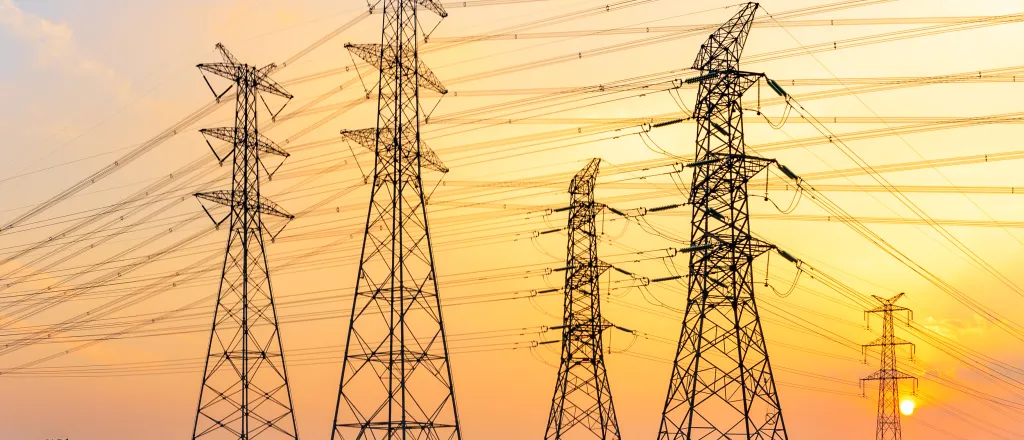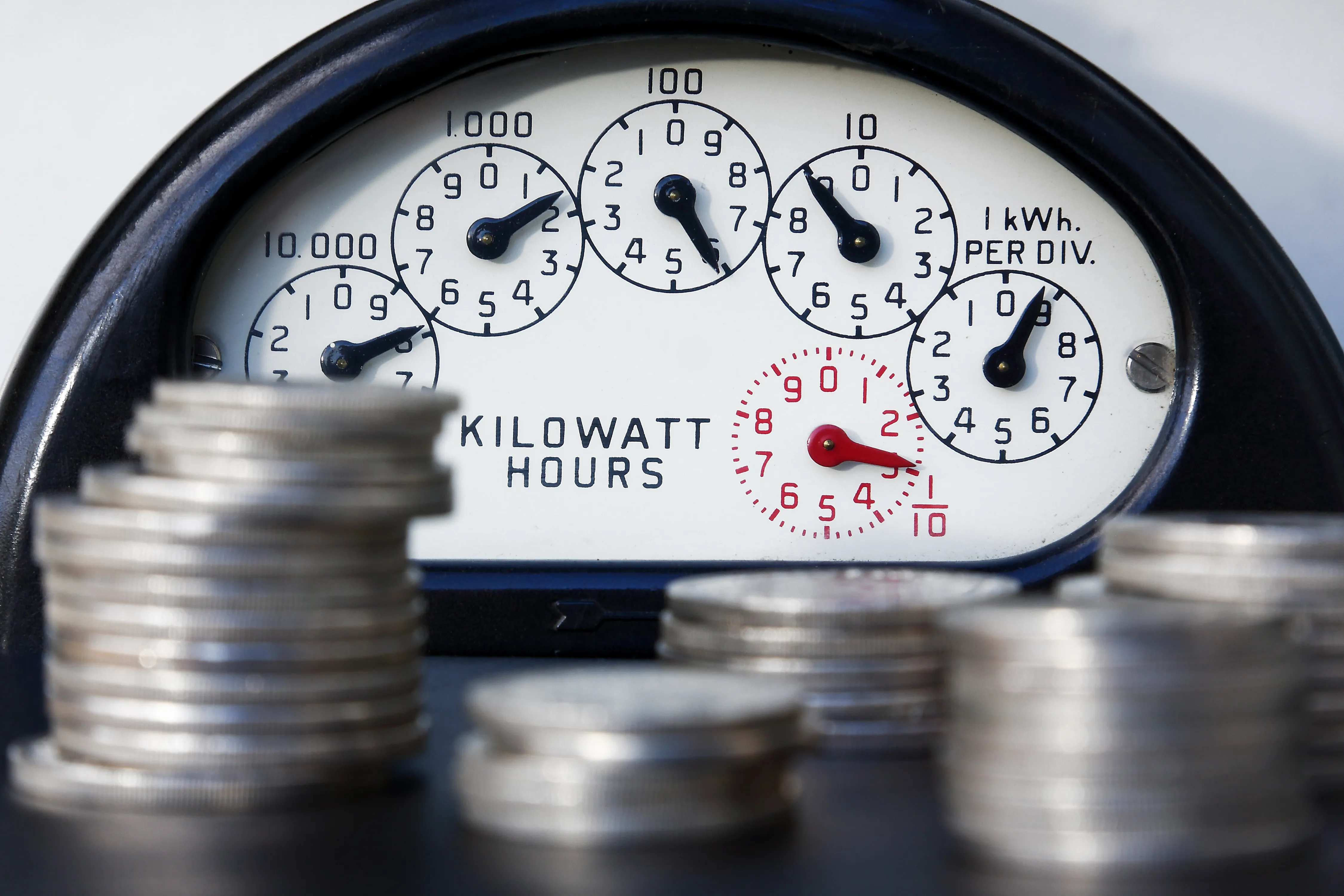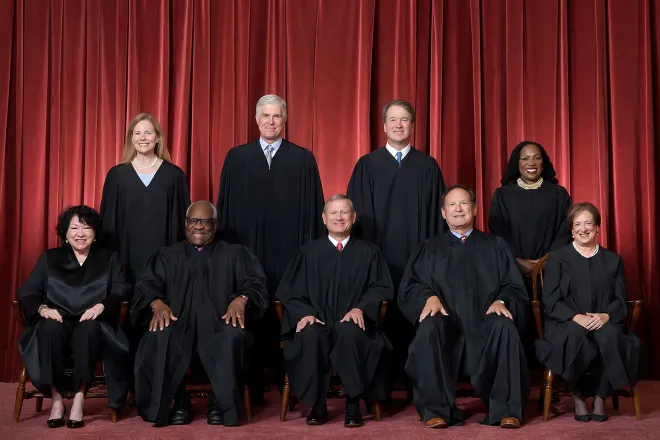
The ‘future of housing’ has arrived in all-electric Colorado developments
© iStock - zhaojiankang
(Colorado Newsline) Grand Junction homebuilder Darin Carei decided to forgo a natural gas hookup to his Brookfield South Residential subdivision after learning the cost to bring in gas lines would be equal to installing solar panels on each of the houses that overlook the red-rock walls of Colorado National Monument in the distance.
His company, Senergy Builders, has built energy-efficient Energy Star-certified homes since 2011. With the Brookfield subdivision, Senergy is taking the clean energy concept a step further by not adding fossil fuel to the home; instead he’s building all-electric, solar-powered net-zero homes.
“We believe this is the future of housing,” Carei said.
The fifth-leading source of greenhouse gas emissions in Colorado is its more than 2.5 million residential and commercial buildings, said Ari Rosenblum, spokesperson for the Colorado Energy Office.
Colorado is promoting all-electric buildings to help the state achieve its emissions reduction targets of 26% by 2025, 50% by 2030, and 100% by 2050 from 2005 levels. All-electric buildings can also reduce utility costs for residents and business owners, who currently spend more than $7 million on utilities each year, Rosenblum said in an email to Newsline.
Senergy Builders is working with EnergyWise Consultants, a local Energy Star consultant, and Atlasta Solar Center in Grand Junction to install 7-kilowatt solar panel systems to each rooftop in his Brookfield subdivision. Each system is designed to produce 100% of the homeowners’ energy needs.
“The home produces as much energy as it consumes — that’s the key,” Carei said. “We are producing a net-zero, good quality product with energy-efficient appliances, an energy-efficient mechanical system (air pumps for heating and cooling), and solar panels on the roof to fuel those efficient items.”
While solar panels are not uncommon, not adding natural gas as a second fuel to buildings is less common, Carei said.
But he’s not the only developer choosing to forgo gas to power the inside of buildings. BOA Builders owner Charlie Gechter is currently building three houses in his Shadow Mesa subdivision, also in Grand Junction, and a five-unit townhome near Colorado Mesa University, all of which will be all-electric, without any gas lines brought in.
Habitat for Humanity of the Roaring Fork Valley also decided to skip natural gas for its Basalt Vista project, a 27-unit affordable housing development in the town of Basalt. Powered 100% by solar panels, Basalt Vista is a collaboration between the Roaring Fork Habitat affiliate, Pitkin County, and the Roaring Fork School District, said homeowner services director and volunteer coordinator Carolyn Meadowcroft.
“We’re the poster child for this type of idea in development,” Meadowcroft said. “Basalt Vista was selected to receive (Habitat’s) 2021 Best Multi-Family Design Award for the project — based on its net-zero status.”
No gas stoves
There are other all-electric housing developments popping up in Colorado, as well.
“As the cost, environmental and health benefits of all-electric homes and buildings become more widely known, developers are investing in new all-electric buildings and neighborhoods in several communities in Colorado,” Rosenblum said.
For example, in addition to Grand Junction and Basalt there are existing or planned all-electric housing developments in Arvada, Breckenridge, Denver, Fort Collins, and Pueblo.
Carei said he wanted to prove that not adding gas to a home can be done as a standard housing product. It also improves indoor air quality, and eliminates the risk of carbon monoxide poisoning, he said.
“There’s a reason we’re talking about efficient building — it’s cost effective and helps us reach climate goals,” said Karen Hagerty, senior director of workforce development for Interstate Renewable Energy Council. “Our strategy is electrification to decarbonize. During new construction is the perfect opportunity to not bring in new natural gas infrastructure — you’re not incurring that cost.”
There’s a reason we’re talking about efficient building — it’s cost effective and helps us reach climate goals.– Karen Hagerty, of the Interstate Renewable Energy Council
Hagerty added, “It’s what’s happening; it will take consumer education. Gas stoves release pollutants inside the house; it will take time to combat the gas range addiction. It will take a lot of contractor training, too.”
Still, not everyone is willing to give up their gas stove — which could make all-electric homes undesirable for some homebuyers — despite evidence gas ranges pollute indoor air.
Another potential downside to all-electric homes is higher monthly operating costs in some cases. Carei said it’s important for builders to evaluate front-end costs with back-end operational savings to produce a house that is not only safe and comfortable but also cost-effective for the homeowner. For example, Senergy is choosing air source heat pumps to heat and cool its homes. Though more expensive to install, heat pumps save owners money on a monthly basis.
And when builders like Carei and Habitat for Humanity install solar or a geothermal system designed to produce all of the home’s energy needs, those monthly utility bills are negligible or nonexistent.
State and federal climate goals to reduce carbon emissions have spurred various rebates, tax credits and other incentives to encourage individual homeowners and developers to choose high-efficiency electric technologies for their buildings. The Colorado Energy Office recommends that Coloradans also contact their utility providers for more information regarding incentives for electric heating equipment and appliances.
Grand Valley Power is the service provider for Senergy’s solar-powered Brookfield subdivision in Grand Junction. Homeowners will not have an electric bill, other than Grand Valley Power’s basic monthly service fee of $29. The Basalt Vista neighborhood’s service provider is Holy Cross Energy — those homeowners will pay just $14 per month, said Meadowcroft. Both systems are tied to the grid, which Carei said acts as a backup power source. Excess energy produced by homeowners goes back into the grid and can be drawn upon during higher usage periods. If a household was to ever consume more than the system produced, it could access power in the grid.
The 1,400- to 1,600-square-foot Brookfield houses will include three bedrooms, two baths, and a two-car garage with an electric vehicle charger. (The Basalt Vista development also comes with EV chargers in its garages.) Set on 7,900- to 12,000-square-foot lots, the Brookfield homes will be listed at between $380,000 and $450,000. The median house price in Grand Junction is $380,000.
Carei said he hopes to see the first Brookfield home completed in time for Grand Junction’s Parade of Homes tour in October. Forty-seven homes will be built during the first phase, with another 34 homes added later.
Basalt Vista was completed in July 2022. A Habitat for Humanity affiliate in Rifle broke ground on a net-zero subdivision there in March. Ten townhomes and 10 condominiums are planned for Rifle, with the first home expected to be completed in October, Meadowcroft said.
Colorado and some local jurisdictions across the country are prioritizing all-electric future development, according to the Colorado Energy Office. The town of Crested Butte became the first municipality in Colorado to require all new residential and commercial development be all-electric and not use gas for heating, hot water heating, or appliances — a policy that went into effect in January 2023.
“After we adopted the code a lot of municipalities reached out to us about wanting to do the same,” said Crested Butte senior planner Jessie Earley.
Some jurisdictions have also adopted electric-ready building energy codes that require new buildings to be built to accommodate electric vehicle charging and electric heaters, water heaters and appliances. Additionally, Colorado’s Energy Code Board adopted a model electric-ready and solar-ready building code, which local jurisdictions are required to adopt and enforce, along with the 2021 International Energy Conservation Code, when updating any other building code, as of July 1. While electric-ready building energy codes still allow for gas hookups in new buildings, these requirements reduce the cost to switch to electric technologies in the future.
Gov. Jared Polis in May signed Senate Bill 23-291, which eliminates incentives for installation of gas line extensions in new buildings and developments. Because utilities are no longer allowed to subsidize the expansion of the gas distribution system, all-electric homes and buildings will become more cost-effective, which could attract more developers and would save owners and tenants money on future energy costs, said Rosenblum.
Colorado residents can visit Love Electric to learn more about electrification incentives.
This list includes state and federal incentives for creating clean energy buildings.
State incentives
Heat Pump Tax Credit: Starting Jan. 1, Coloradans are eligible for a refundable tax credit for the purchase and installation of heat pump technologies through a certified installer. This includes $1,500 for an air-source heat pump; $3,000 for a ground-, water-, or combined-source heat pump; and $500 for a heat pump water heater. Multifamily developments can receive tax credits for heat pumps, with the credit amount determined by the number of units using the heat pump system. Nonresidential buildings can receive a tax credit based on heating capacity ($3,000 per 4 tons up to 100 tons). These tax credits are also available for the development of thermal energy networks (such as multiple buildings connected to the same geothermal system). The tax credit amounts decrease over time. More information about these tax credits will be available later this year.
Geothermal Energy Grant Program: Supports the use of zero-emission, geothermal energy for electricity generation and space-and-water heating and cooling in homes, businesses, and communities. Grant applications are expected to open before the end of 2023.
High Efficiency Electric Heating & Appliances Grant Program: Supports community-scale electrification projects. Public, private, and nonprofit organizations are eligible to apply for funding for planning and design, infrastructure upgrades, and equipment purchases to support high efficiency electric heating and appliances.
Energy Code Adoption & Enforcement Grant Program: Supports local governments in updating their building energy codes and ensuring these codes meet or exceed state energy code requirements.
Federal Incentives
For residents
Federal tax credits are currently available for the purchase of a variety of electric and clean energy technologies. The state is also currently awaiting guidance from the U.S. Department of Energy on two income-qualified home energy rebate programs. Residents can learn more about what incentives are available to them on the DOE’s website.
For developers
Zero Energy Ready Home Tax CreditsSolar Investment and Production Tax CreditsEnergy Efficient Commercial Building Tax CreditThe Colorado Energy Office recommends Coloradans reach out to their utility provider for more information on incentives for electric heating equipment and appliances. Colorado residents can also find information about electrification incentives available to them through LoveElectric.
Colorado Newsline is part of States Newsroom, a network of news bureaus supported by grants and a coalition of donors as a 501c(3) public charity. Colorado Newsline maintains editorial independence. Contact Editor Quentin Young for questions: info@coloradonewsline.com. Follow Colorado Newsline on Facebook and Twitter.

















